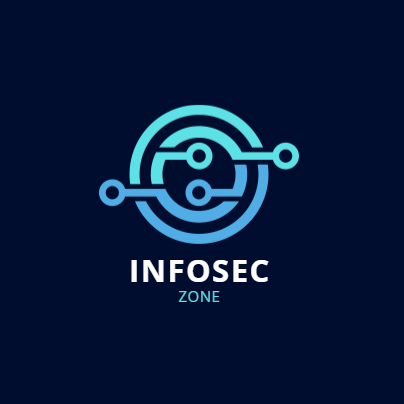Privileged Access Management (PAM)
What Is Privileged Access?
Privileged access refers to special access or abilities above and beyond that of a standard user. Privileged access allows organizations to secure their infrastructure and applications, run the business efficiently, and maintain the confidentiality of sensitive data and critical infrastructure.
Privileged access can be associated with human and nonhuman users such as applications and machine identities.
Notable Security Breaches Involving Privileged Access
Over the past decade, numerous security breaches have been linked to privileged access abuse. From Terry Childs and Edward Snowden to Yahoo! and the massive breach at the U.S. Office of Personnel Management to the Bangladesh Bank breach and the attack on the Ukraine power grid and even Uber’s highly publicized security breach – in each episode executives or employees with privileged credentials were able to obtain unauthorized access to sensitive data by using their elevated rights in ways that violated company policy.
What Is Privileged Access Management (PAM)?
Privileged Access Management (PAM) is a cybersecurity strategy to protect against credential theft and privilege misuse. PAM comprises people, processes, and technology to control, monitor, secure, and audit all human and non-human privileged identities and activities across an enterprise IT environment. It is grounded in the principle of least privilege—which states that users are granted access to only those necessary resources to perform their job functions—and is widely considered a foundational step in protecting privileged access to high-value data and assets. By enforcing the principle of least privilege, organizations can reduce the attack surface and mitigate risk from malicious insiders or external cyber attacks that can lead to costly data breaches.”
Key Privileged Access Management Challenges
Organizations face a number of challenges in protecting, controlling, and monitoring privileged access including:
- Managing account credentials: It can be an inefficient and costly approach for IT organizations to rely on manually intensive, error-prone administrative processes to rotate and update privileged credentials.
- Tracking privileged activity: Because many enterprises cannot centrally monitor and control privileged sessions, they are at a greater risk for cybersecurity threats and compliance violations.
- Monitoring and analyzing threats: Many organizations lack advanced threat analysis tools and are unable to proactively identify suspicious activities or security incidents.
- Controlling Privileged User Access: Organizations often struggle to effectively control privileged user access to cloud platforms, SaaS applications, social media, and more. This creates compliance risks and operational complexity.
- Protecting Windows domain controllers: The Kerberos authentication protocol can be exploited by cyber attackers to impersonate authorized users and gain access to critical IT resources and confidential data.
Why Is Privileged Access Management (PAM) Important For Your Organization?
- Humans are the weakest link in cybersecurity. Privileged users can abuse their level of access, and external cyber attackers can use privileged identities to get closer to a target. Privileged access management helps organizations ensure that users have only the necessary levels of access to do their jobs, and it helps security teams identify malicious activities linked to privilege abuse and take swift action to remediate risk.
- Privileged access management is a crucial component of any organization’s security strategy. In today’s digital business environment, privileged entities vastly outnumber the people in an organization and are harder to monitor and manage—or even identify at all. Commercial-off-the-shelf (COTS) apps typically require access to various parts of the network, which attackers can exploit. A strong privileged access management strategy accounts for privileges no matter where they “live”—on-premises, in the cloud, and in hybrid environments—and detects anomalous activities as they occur.
- Cyber attackers target endpoints and workstations, but every endpoint in an enterprise contains privilege by default. Admin accounts on workstations enable IT, teams to fix issues locally, but those same accounts introduce great risk. Attackers can exploit admin accounts, then jump from workstation to workstation, steal additional credentials, elevate privileges and move laterally through the network until they reach what they’re looking for. A proactive PAM program should account for the comprehensive removal of local administrative rights on workstations to reduce risk.
- Privileged access management helps organizations to monitor and detect suspicious events in an environment, but the ability to do so depends on a clear focus on what poses the most risk: unmanaged, unmonitored, and unprotected privileged access. PAM is critical for achieving compliance by enabling organizations to record and log all activities that relate to critical IT infrastructure and sensitive information.
Organizations that prioritize programs that address privacy, authentication, and mobility (PAM) as part of their overall cybersecurity strategy can experience a number of benefits, including mitigating security risks and reducing the overall cyber attack surface, reducing operational costs and complexity, enhancing visibility and situational awareness across the enterprise and improving regulatory compliance.
Privileged Access Management Best Practices
The following steps outline a framework for establishing the essential controls for an organization to strengthen its security posture. A program that leverages these steps can help organizations achieve greater risk reduction in less time, protect their brand reputation and help satisfy security and regulatory objectives with fewer internal resources.
- Eliminate the risk of irreversible network takeover attacks by isolating all privileged access to domain controllers and other Tier0 and Tier1 assets and requiring multi-factor authentication.
- Control and secure infrastructure accounts by placing all well-known accounts in a centrally managed digital vault. Rotate passwords on a regular and automatic basis after every use.
- Limit lateral movement by removing all endpoint users from the local administrators’ group on IT workstations.
- Protect privileged credentials used by third-party applications. Eliminate hardcoded credentials for commercial off-the-shelf applications.
- Administrators and privileged business users should take steps to secure access to shared IDs, such as requiring multi-factor authentication.
- It is advisable to invest in periodic Red Team exercises to test the effectiveness of your defenses.




